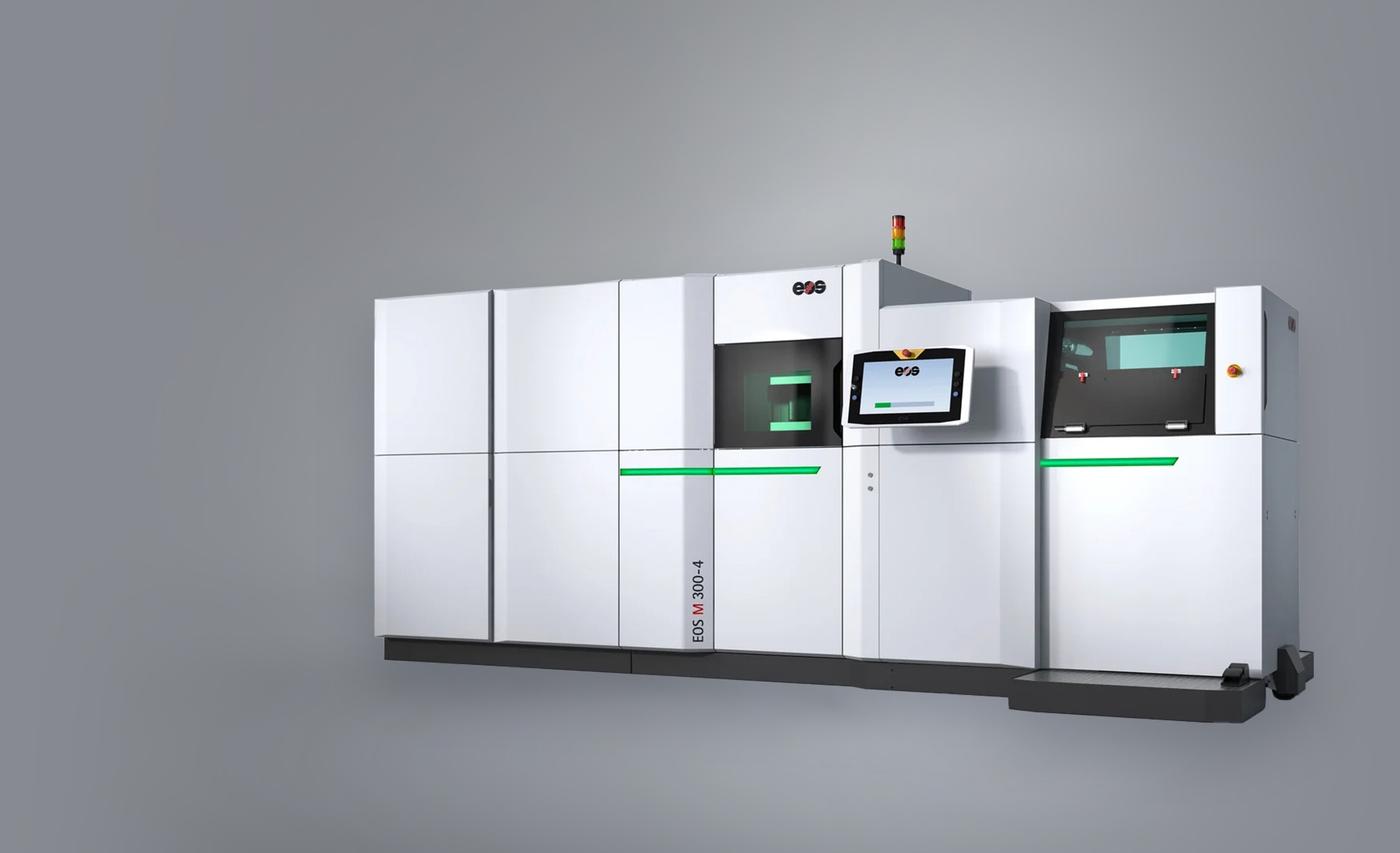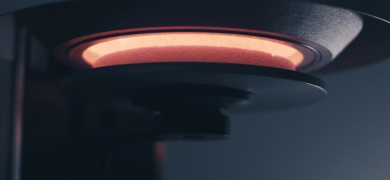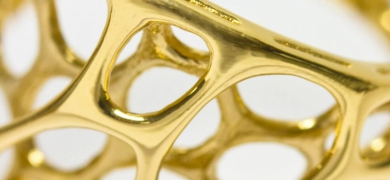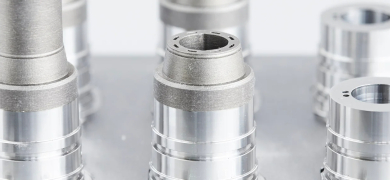

EOS M 300-4
DMLS Quality With up to 10x More Productivity
Different degrees of automation for individual requirements
Consistent part quality over the entire build space
Up to four precision fiber lasers cover the entire 300 x 300 mm area
Automation
The EOS M 300-4 enables flexible adaptation to all individual requirements through various degrees of automation, helping to ensure an optimized workflow.
Quality
The exceptional laser and performance stability ensures consistent part quality over the entire build space, including full coverage of overlaps.
Productivity
Up to four precision fiber lasers work over a 300 x 300 mm area, with each laser covering the entire space.
Technical Data EOS M 100
- Construction Volume
- 300 x 300 x 400mm (11.8 x 11.8 x 15.8 in)
- Laser Type
- Yb-fiber laser; 4 x 400 W
- Precision Optics
- 4 F-theta-lenses; 4 high-speed scanners
- Scan Speed
- up to 7.0 m/s (23 ft./sec)
- Focus Diameter
- approx. 100 µm (0.004 in)
- Power Supply
- 3 x 80 A
- Power Consumption
- max. 36 kW / typical 26 kW
- Compressed air supply
- 7,000 hPa; 15 m³/h (102 psi; 530 ft³/h)
- Machine Dimensions (W x D x H)
- 5,221 x 2,680 x 2,340 mm (205.6 x 105.5 x 92.1 in) (with EOS Transfer Station M)
- Recommended Installation Space
- min. 8,800 x 5,200 x 3,500 mm (346.5 x 204.7 x 137.8 in)
- Weight
- approx. 5.500 kg
- Software
- EOSPRINT 2, EOS ParameterEditor, EOSTATE Monitoring Suite, EOSCONNECT Core, EOSCONNECT Core, EOSCONNECT MachinePark, Materialise Magics Metal Package and modules.
Compatible materials
 3D Printing in Medical Technology
3D Printing in Medical Technology
Additive Manufacturing for Medical Equipment
For laboratory equipment and medical imaging systems (also known as imaging diagnostics or just imaging, e.g. CT, MRT or X-ray equipment), additive manufacturing is a production technology that offers new opportunities to optimize both the product and the manufacturing costs.
More information → Gold, Silver, Platinum and Palladium
Gold, Silver, Platinum and Palladium
Digital Production of Jewelry & Watches
Using CAD model data, 3D printers are used to build elegant jewelry articles layer by layer – without the process leaving any recognizable marks behind. The appearance of the finished products rivals artisanal blacksmithing in every regard. AM also allows the reduction in the cost of materials. By integrating empty spaces into the design, work pieces can be made more cost-efficiently and easily in a manner that saves resources.
More information → 3D Printed Molds and Tools
3D Printed Molds and Tools
Reduce Cycle Times, Increase Cost-Efficiency
Why using additive manufacturing to produce 3D printed molds and tools? As an industrial production method, the 3D printing process of additive manufacturing offers enormous design and manufacturing freedom. The most complex of shapes can be designed and produced in the highest quality, quickly and cost-efficiently, even for small batch sizes. In this way, the process provides a solution to a tooling challenge faced by many tool and mold makers:
In many industries, producing specialized tools and parts is one of the most resource-intensive manufacturing processes. Conventional processes are typically expensive, time-consuming and technically very challenging. The 3D printing process with EOS metal materials is the answer.
More information →

